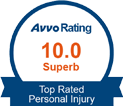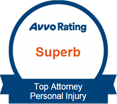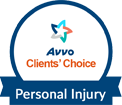Car accidents are the most common cause of personal injuries in the state of California. Statistics show that over 200,000 people in California alone get injured in car accidents every year. One type of car accident that is likely to result in severe injuries is a head-on-collision accident. Liability in such an accident depends on whether one or both drivers were negligent at the time of the crash.
The process of establishing liability starts with determining the cause of the accident and the liable party. It may not be an easy process for an injured person. That is why we at The Personal Injury Attorney Law Firm offer legal guidance and advice to ensure that the injured party receives full compensation for their injuries. If you or your loved one has suffered in a head-on accident in California, we are here to help you.
California Laws on Head-On-Collisions Injuries
Head-on-collision accidents happen when the front ends of two vehicles collide. These kinds of car accidents account for around 2% of all crashes that occur in the state of California. Unfortunately, most head-on-collisions result in severe injuries, and others are fatal. Most of California head-on-collision accidents result from one or more people's negligence. If, for instance, a motorist fails to remain in their lane and continues driving into oncoming traffic, they can easily cause such an accident. Accidents could also happen when a motorist presses on a wrong-way. If, for instance, a motorist makes an unlawful turn into a one-way street, he/she is likely to bump into another vehicle causing an accident.
California personal injury laws allow a person who has been injured in an accident as a result of another's negligence, breach of duty, or purposeful conduct to pursue compensation for their injuries. It means that you can file a lawsuit against the responsible person who has caused you the damage to recover several losses, including medical expenses, lost wages, rehabilitation expenses, reduced earning capacity, and pain & suffering, among others. For you to benefit from the provisions of this law, it is essential to understand the laws that pertain to personal injury claims in California.
The best way to go about it is with the help of a competent personal injury attorney. Such an attorney will know how to go about your lawsuit to ensure that you recover all the damages you have incurred in the accident. However, it has to start with determining liability. Through the help of your attorney, you can quickly determine the cause of the accident. It could either be distracted driving, drunk driving, or failing to yield. The party that is at fault will be required by the court to pay compensation to the injured party for all their losses
Common Reasons For California Head-on-Collision Accidents
As mentioned above, there are many reasons for California head-on crashes, with the most common ones being:
Distracted Driving
Distracted driving is among the most common causes of accidents on our roads today. A distracted driver can easily veer off his/her way and drive into oncoming traffic. It is prevalent today, especially when advanced technology is always with us. A driver could, for instance, decide to read his/her emails or talk on their cell phone while driving. A slight distraction in driving can cause a motorist to make a huge mistake that could endanger the lives of many road users. In no time, such a diver can cause an accident. Eating when driving and also focusing on other passengers or children could also result in a head-on-collision accident.
Driving while Under the Influence
A driver who operates a vehicle under the influence has their judgment severely impaired. Such a driver can quickly get distracted or lose control of the car, causing him/her to drift off into oncoming traffic. A drunk driver will also be too disoriented to make sound driving choices. If such a driver is operating on a one-way street, for instance, the chances of crashing into an oncoming car are high. This explains why most head-on-collision accidents that occur late in the night are usually grave and fatal.
Bad Weather Conditions
Some accidents occur as a result of adverse weather conditions. When the weather is so harmful to the point of affecting a driver's roadway visibility, accidents could happen. Such weather conditions as rainfall and heavy and dense fog could significantly affect a driver's visibility. If the driver does not slow down, the chances of driving off the wrong way and causing an accident are high in such conditions.
Fatigue
Drivers who operate large vehicles for long distances are likely to push themselves hard, especially when they get exhausted. It is hard to concentrate when one is extremely tired. A fatigued driver will put the lives of other road users at significant risk. It is because when one is tired, their reaction time and decision-making are slowed down. Many head-on-collision accidents have been caused by drivers who fell asleep while driving. That is why drivers who cover long distances are encouraged to stop occasionally so that they could get some rest before going on with their journey.
Speeding
Traveling at a higher speed than required is very dangerous, and the resulting damage could be more severe if an accident occurred. Most drivers who travel at high speeds operate their cars in a threatening manner, putting others and also themselves at more significant risks. Speeding drivers are likely to miss a road sign. If, for instance, there was a road sign redirecting traffic due to road resurfacing, the speeding driver will miss such a warning, thereby causing a head-on-collision accident that could put so many innocent lives in danger.
Types of Injuries in a California Head-On-Collision Accident
The severity of a head-on-collision accident is determined by the speed at which the driver was traveling. The seriousness of such an accident will determine the types of injuries the affected people will suffer. When both cars are being driven at great speeds, the resulting injuries can be severe and sometimes fatal. If the accident doesn’t result in death, here are the most popular damages that head-on-collision victims could suffer:
Whiplash
Such an injury occurs because, after an impact, both the neck and head continue moving forward even when the body stays in place, especially if the injured was wearing a seatbelt. The sudden jerking movement of the head and neck causes the muscles and ligaments in the back and neck to stretch. Based on the seriousness of the crash, the shoulders and neck could stretch way beyond their standard capacity, causing the tendons, muscles, and ligaments to stretch and tear.
Such an injury could last from a few months to many years. In that time, the accident victim will be complaining of headaches, pain in the neck, shoulders, and the back, dizziness, blurred vision, weakness, and numbness.
Treatment for whiplash is a must; otherwise, the pain will never go away. The victim may even have to depend on a chiropractor until they recover from the pain.
Injuries to the Spinal Cord
If the impact was very severe, spinal cord discs could become seriously compressed. A severe crash could also cause the vertebrae to break or get damaged. There are times when damages in the spinal cord could result in paralysis. When this happens, the victim experiences a partial or complete loss of sensation, subject to the seriousness of the injury. The paralysis could affect the torso, legs, or all four limbs, based on the area of the damage.
When a person suffers an injury to their spinal cord, they need immediate medical care. The patient may even receive treatment for a much more extended period as severe cases of spinal cord injuries are not adequately treated.
Traumatic Brain Damage
When one vehicle hits another, the driver's head could land on the steering wheel. This could cause their skull to fracture on impact, and the result is a traumatic injury to the brain. The human brain can suffer severe damage after the fracturing of the skull, which is a common occurrence after a head-on accident. Based on the seriousness of the crash, the victim may fully recover from the trauma.
Broken Facial Bones
Sometimes the degree of a head-on accident could be so severe to the point of causing facial damage even when an airbag protected the victim. When this happens, the facial, as well as inner bone structures, could get crushed, resulting in severe injuries to the jawbone, eye sockets, chin, and cheeks. When a person suffers serious facial bone damage, treatment could include undergoing plastic surgery, which might leave a scar, they will have to bear for the remaining part of their life.
Compensable Damages in a California Head-on Collision Accident Lawsuit
There are both monetary and non-monetary damages to think of when bringing an injury claim for such an accident in California. Some of the compensatory damages that could arise in a head-on crash include:
- Medical bills — a person who wrongfully or negligently causes an injury is mandated by California law to cater for the injured person’s medical bills. The careless party could make this payment in person, through their company or insurance provider.
- Ambulance bills — Depending on the severity of the accident, the liable party could be required to cater for the ambulance services as well. an injured person could use such services in the course of seeking better medical help
- Emergency room medical treatment if the injured suffered an injury that required emergency care such as surgery
- Physical therapy — the injured might need therapy if one or more of their limbs was injured in the accident
- Prescription medicine
- Ongoing treatment and care especially if the injuries take a long time to get treated
- Medical supplies for the length of time the plaintiff will need medical help
- Lost wages for the days the injured will stay out of work recovering
- Loss of earning capacity in case the accident made it impossible for the injured to work as much as they used to work before the crash
- Suffering and pain
- Vehicle repair
- The lost consortium, which are the damages paid to the injured party's partner or spouse
- Damages for wrongful death in case a person lost their life to the accident
- Punitive damages — the court awards them as a way to punish the at-fault party and ensure that he/she does not act with negligence in the future
Determining Fault in California Head-on-Collisions Accident
In determining fault in any California car accident, the state's negligence laws have to be used. Generally, the law provides that the negligent person should be held responsible for all the damages and injuries that the other person/people suffer. For the plaintiff to recover injuries incurred, they will be required by the court to demonstrate how the offender was negligent and how his/her negligence resulted in the accident. The elements that will be used to show that the offender was negligent include:
- That the offender owed a duty of care to the plaintiff
- That the offender breached the duty of caution through wrongful acts or negligence
- That their carelessness was a significant factor in instigating the injuries or demise suffered by the plaintiff
A person's duty of concern is the primary standard used in California to determine whether or not the person was acting with negligence. When a motorist fails to practice reasonable caution when operating a vehicle and an accident occurs, they will be held responsible for disregard. The standard of caution in California requires every driver to do the following:
- To be careful when operating a vehicle
- To watch out for obstacles, pedestrians, and other vehicles while on the road
- To stay in control of the vehicle’s movement and speed
In an accident such as head-on crash, the plaintiff can, for instance, demonstrate that the offender was careless because he/she did not watch out for the oncoming vehicle, or he/she failed to control the movement or speed of their car.
A driver could be seen as acting negligently in a California head-on accident in the following instances:
- When the driver improperly overtakes another vehicle
- When a driver makes an illegal left turn
- When he/she makes the unlawful U-turn, in violation of Section 22100.5 of California Vehicle Code
- When he/she turns right in front of approaching cars without giving way
- Driving under the influence
- Road rage
- Distracted driving
- Texting on the phone while driving
- Drowsy or fatigued driving
- Operating a hazardous vehicle
Dangerous U and Left turns are the most common causes of head-on crashes in the state of California. A driver could have made a left turn in places where he/she should have yielded to oncoming cars. California has a set of right-of-way rules which provide that drivers must always yield to approaching vehicles from their opposite direction at least until the vehicle that is turning completes their turn safely. If a motorist fails to yield to the turning vehicle, it could result in an accident, and the at-fault driver will be held responsible for the injuries the other driver sustains.
What Will Happen If I Was Partly To Blame for the Accident?
There are many instances when the plaintiff could be partially to blame for the injuries he/she sustained. In the state of California, and unlike most states, a person can still recover part of their damages even if they were partly responsible for the crash. The state uses comparative fault laws to help determine the plaintiff's percentage of fault in a personal injury accident. With that, the defendant will only be held responsible for the percentage of the damage they are believed to have caused.
Again, still under California comparative negligence rule, fault in such an accident could be credited to more than two parties. It means that the defendant will recover damages as per the percentage of fault that each party contributed to the accident.
If, for instance, two drivers, Jimmy and Jones, got into a head-on collision accident, then the court determines that even though Jimmy was to blame for the crash, Jones had a 10% fault in it. Jones will still recover 90% compensation from Jimmy under the state's comparative fault laws.
What To Do If the At-Fault Driver Didn’t Have Insurance
California motorists are required by law to carry minimum insurance coverage, which can cater for:
- $15,000 for injuries or death to one party
- $30,000 for injuries or deaths or more than one party
- $5,000 for damaged property
However, even with such laws in place, some drivers operate on public roads without insurance, which is a significant violation of the law. If such a person gets into a car accident, the injured will have to bring a suit against the uninsured motorist to recover the damages incurred. The problem is that the driver may lack enough assets or money that could help you recover your losses.
California has an underinsured or uninsured motorist coverage that is an optional cover that could be used to pay for losses when a driver causes an accident but doesn’t have auto insurance that could compensate the injured. The cover could also help if the responsible driver's insurance policy doesn’t have enough money to pay for all the damages incurred in the accident.
Most drivers will prefer this type of overage only because they feel for the uninsured driver. However, in severe cases of head-on accidents, the minimum coverage allowed in the state may not be sufficient to compensate the plaintiffs in the crash.
What To Do If the Accident Was Fatal
As mentioned above, head-on accidents can result in either severe injuries or death. If a spouse, parent, or child was killed in the accident, their surviving family members or estate is allowed by the law to bring a lawsuit for compensation in accordance with the state's wrongful death law. In such a suit, only the surviving close relative is allowed to file a claim in court for the damages incurred. Such a person could be:
- The deceased person’s husband/wife or domestic partner
- The child/children
- Grandchildren, but only if the deceased person's children are dead
- Any other person that would be eligible to the deceased person’s property according to succession laws in California
Damages that could be recovered in case of wrongful death in California are different from those that could be recovered in case of physical injuries. The most common ones include:
- Burial and funeral expenses
- Loss of their earning ability to cover what the deceased would have made if the accident had not occurred
- Compensation for loss of affection, support, and companionship
Reasons Why You Need a Competent Attorney
Accidents happen when we least expect. When it comes to a serious accident like a head-on crash, the affected party or their family could suffer so much because of the high medical bills and other expenses that come with such an accident. Getting the right compensation for all the damages incurred is of paramount importance to the affected. That is why you need to work closely with a highly skilled and experienced personal injury attorney.
Contrary to what many people think, having a car insurance policy is never a guarantee that things will work out smoothly when you get involved in an accident. You need legal advice, guidance, and representation to ensure that the insurance company is paying you precisely what you deserve. Your attorney will also help you determine the guilty party, file the relevant documents in court, and meet set deadlines. This way, you will have everything ready during the hearing that will determine whether or not you deserve compensation and how much benefit you should get.
Contact a Personal Injury Attorney Law Firm Near Me
Have you or your loved one been involved in a head-on collision accident, and you want to pursue compensation? What you need are excellent legal services to ensure that your rights are protected. At The Personal Injury Attorney Law Firm, we have a team of competent attorneys who can take up your case, take you through the process, and ensure that you get your full compensation. Call us at 619-625-8707 from any part of California, and we will fight by your side to protect your rights.
 800-492-6718
800-492-6718







